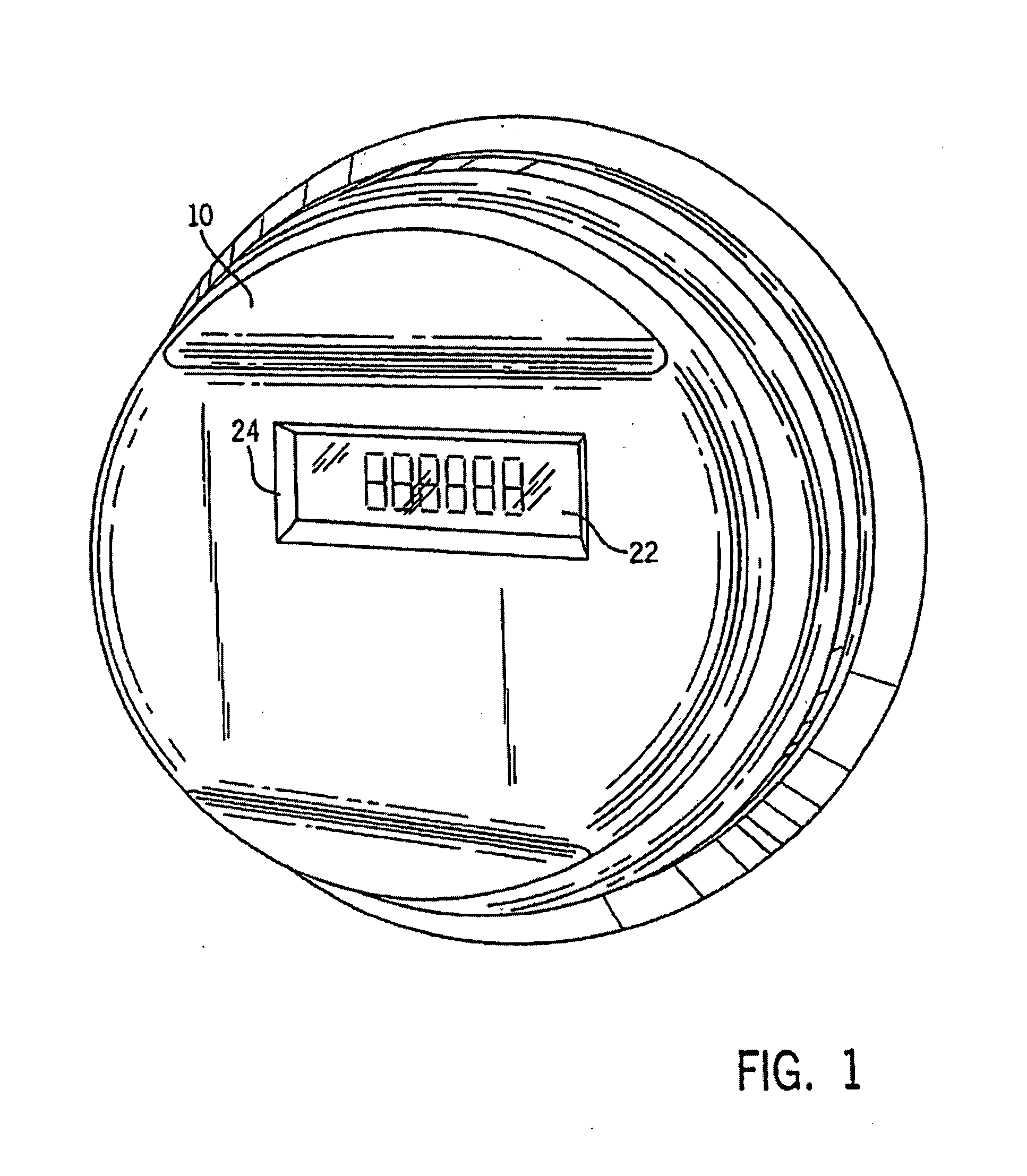Electronic meter for networked meter reading
a technology of electronic meter and network meter, which is applied in the direction of instruments, wireless communication, sustainable buildings, etc., can solve the problems of customer complaints, difficult to cost-effectively measure electricity usage, and difficulty for service personnel to access the meter for reading, inspection and maintenan
- Summary
- Abstract
- Description
- Claims
- Application Information
AI Technical Summary
Benefits of technology
Problems solved by technology
Method used
Image
Examples
Embodiment Construction
Electronic Electric Meter
[0044]FIGS. 1 and 2 show a fully integrated, self-contained electronic electric meter 10 for measuring electricity usage and monitoring power quality. The meter 10 is operable for both single phase and three phase electric power installations. The meter 10 includes a top cover 12 attached to a meter base 14. Extending outwardly from the meter base 14 is a mounting frame 16 and a pair of terminals 18, 20. The meter 10 easily retrofits into existing meter sockets by insertion of terminals 18, 20 into the sockets and interlocking the mounting frame to secure the meter in place. The terminals 18, 20 complete the connection between the electric power line and the meter 10. The meter 10 further includes a liquid crystal display (LCD) 22 for displaying meter readings and settings, units of measure and status conditions. The top cover 12 includes a rectangular opening 24 for the LCD 22. A transparent piece of glass or plastic, which fits the shape and size of the di...
PUM
 Login to View More
Login to View More Abstract
Description
Claims
Application Information
 Login to View More
Login to View More - R&D
- Intellectual Property
- Life Sciences
- Materials
- Tech Scout
- Unparalleled Data Quality
- Higher Quality Content
- 60% Fewer Hallucinations
Browse by: Latest US Patents, China's latest patents, Technical Efficacy Thesaurus, Application Domain, Technology Topic, Popular Technical Reports.
© 2025 PatSnap. All rights reserved.Legal|Privacy policy|Modern Slavery Act Transparency Statement|Sitemap|About US| Contact US: help@patsnap.com



